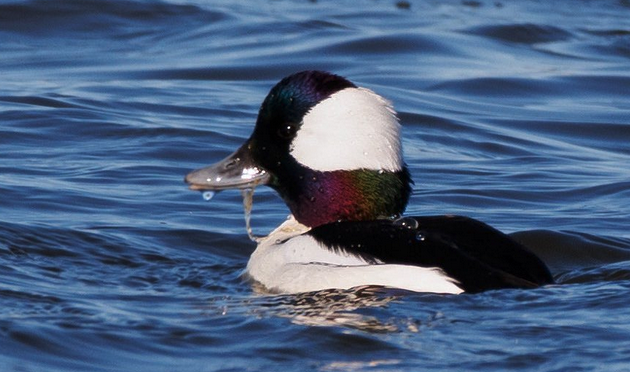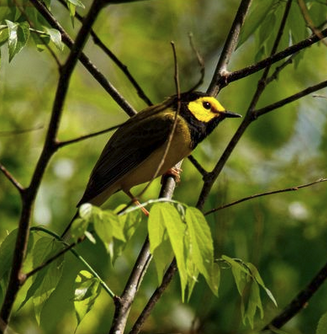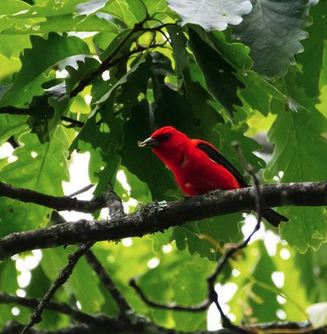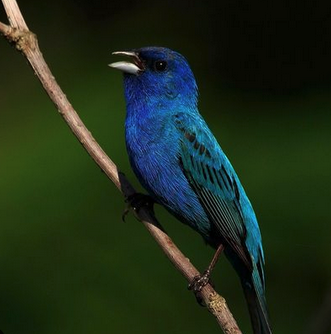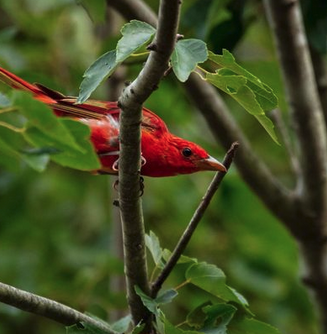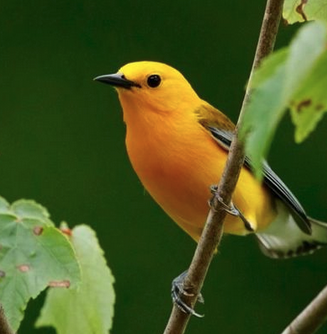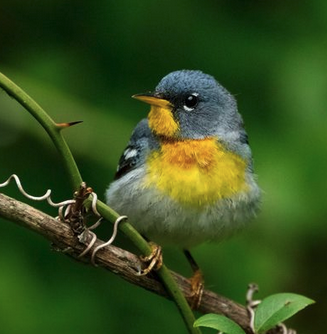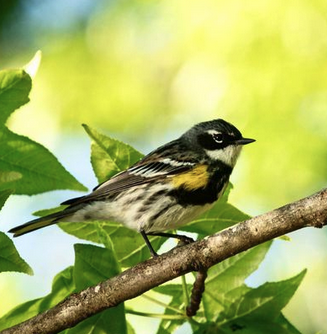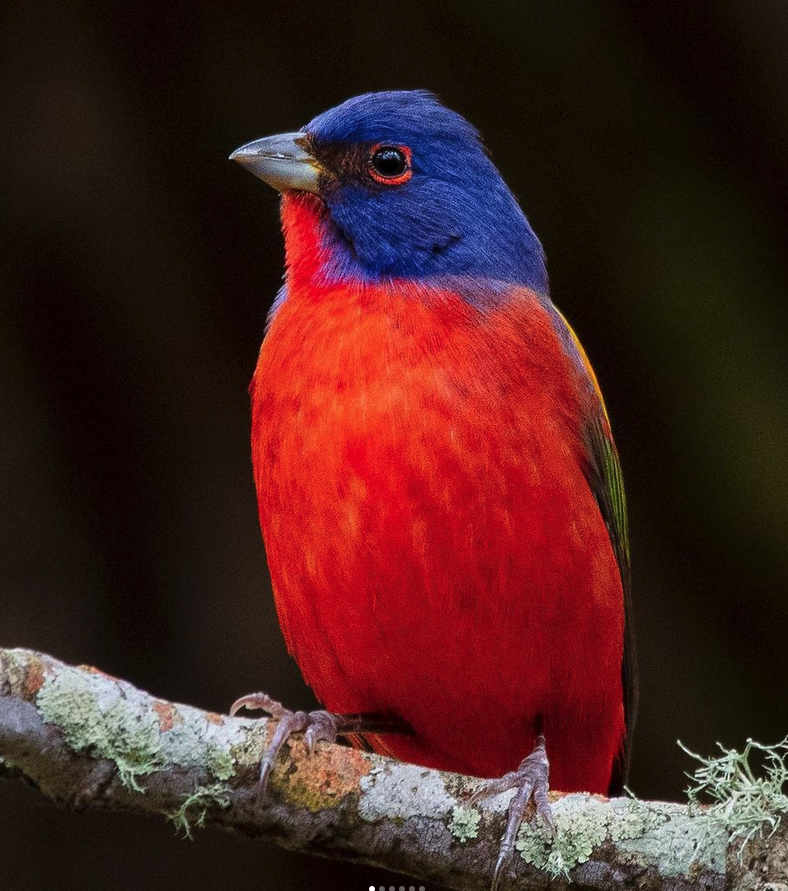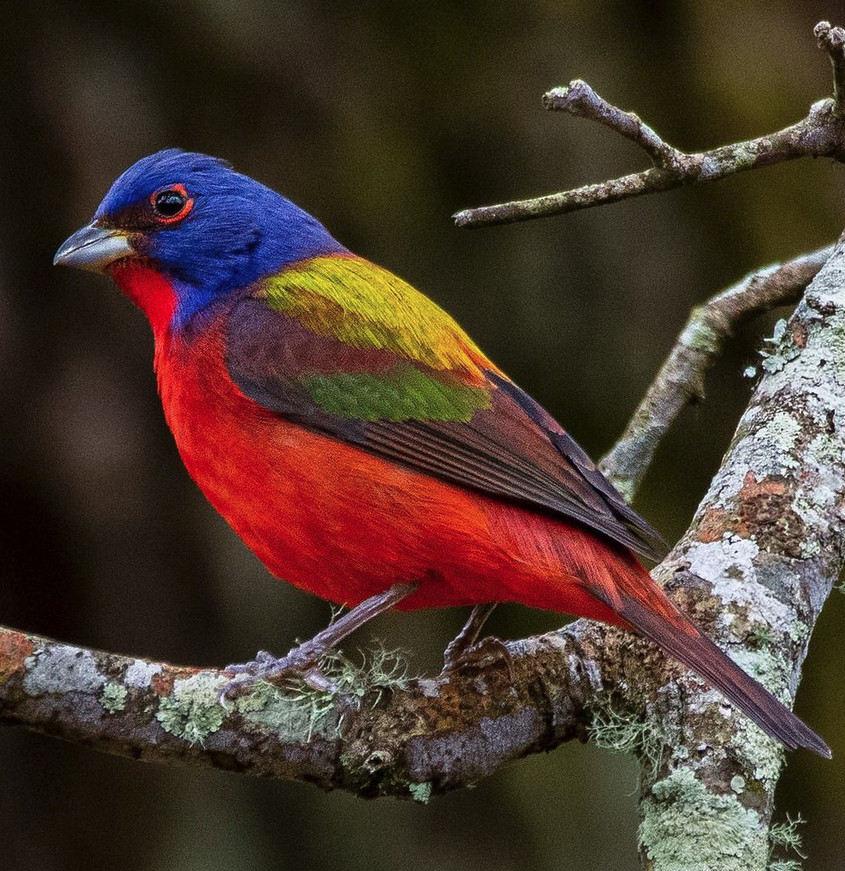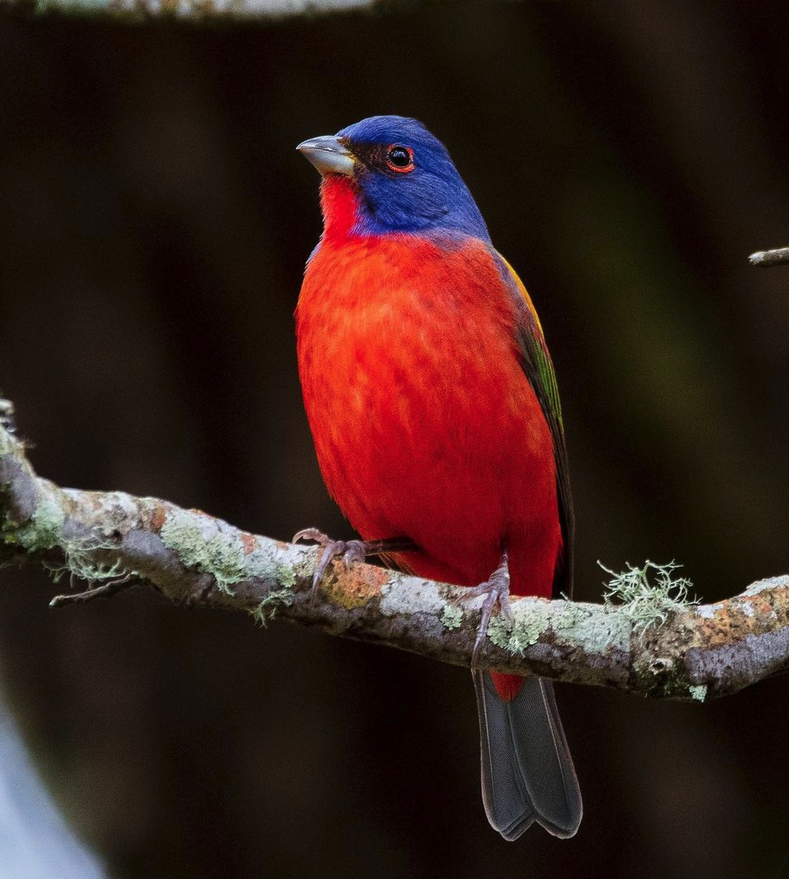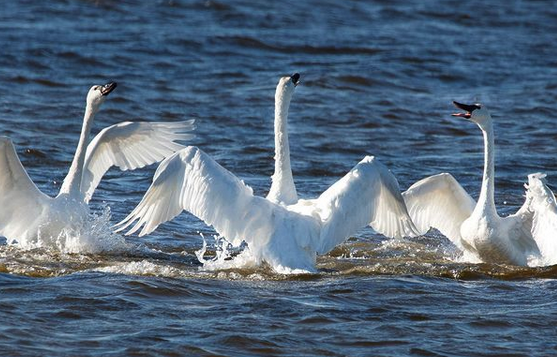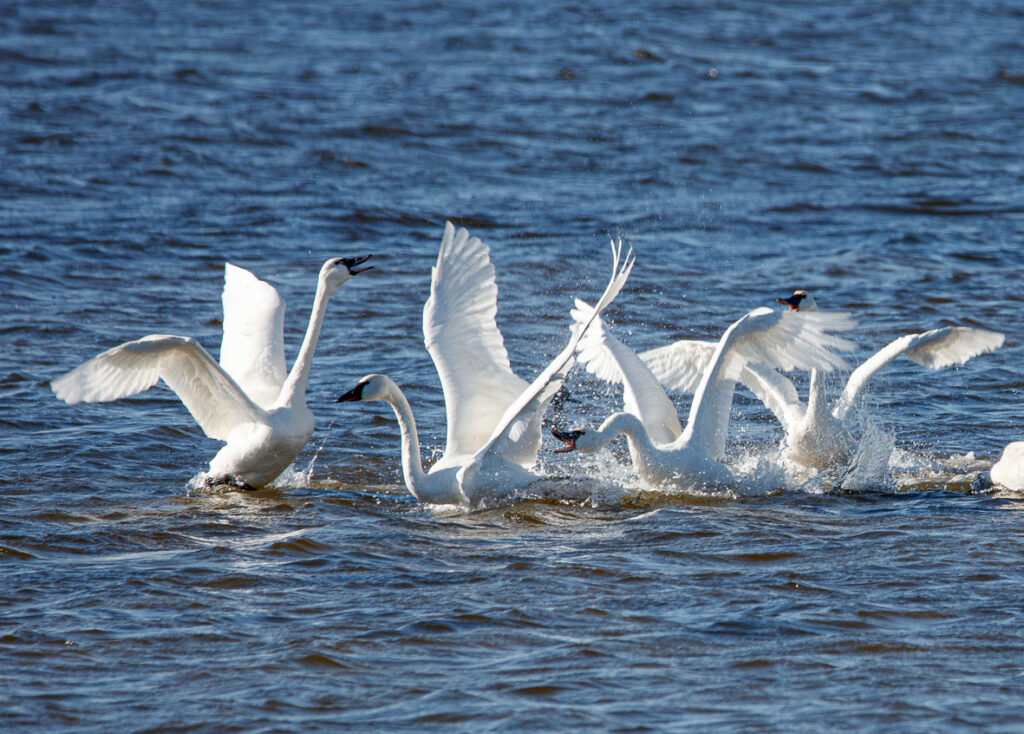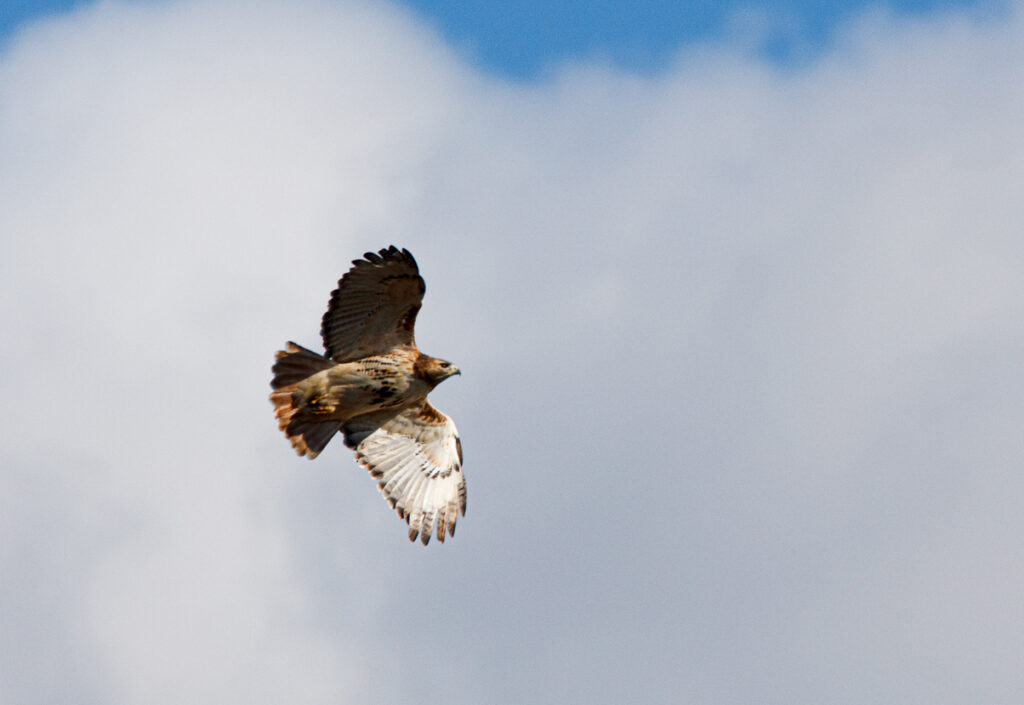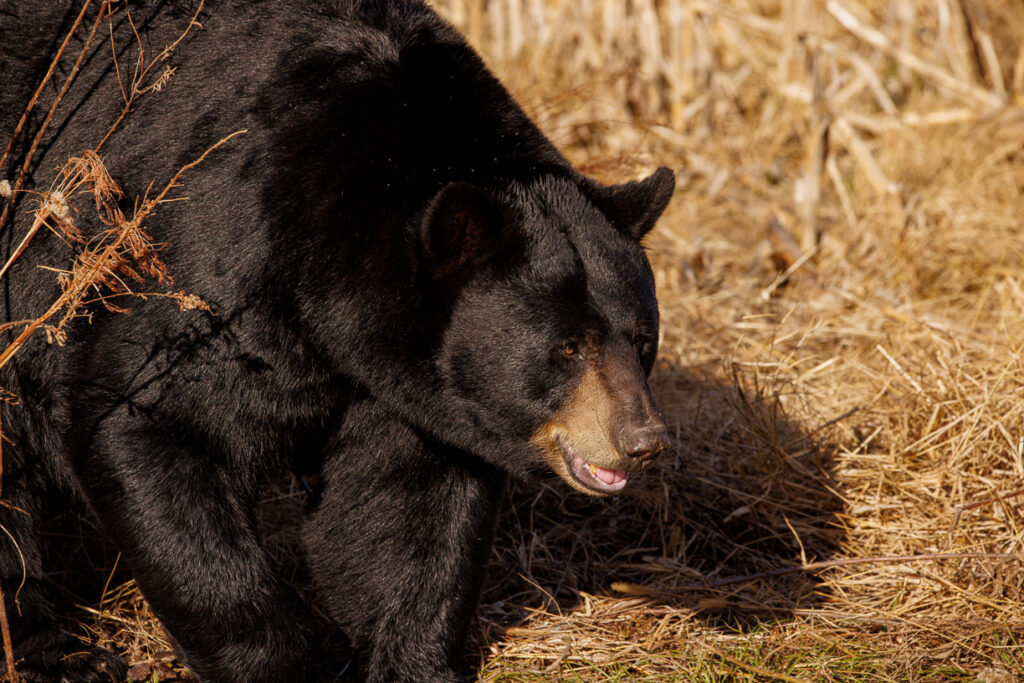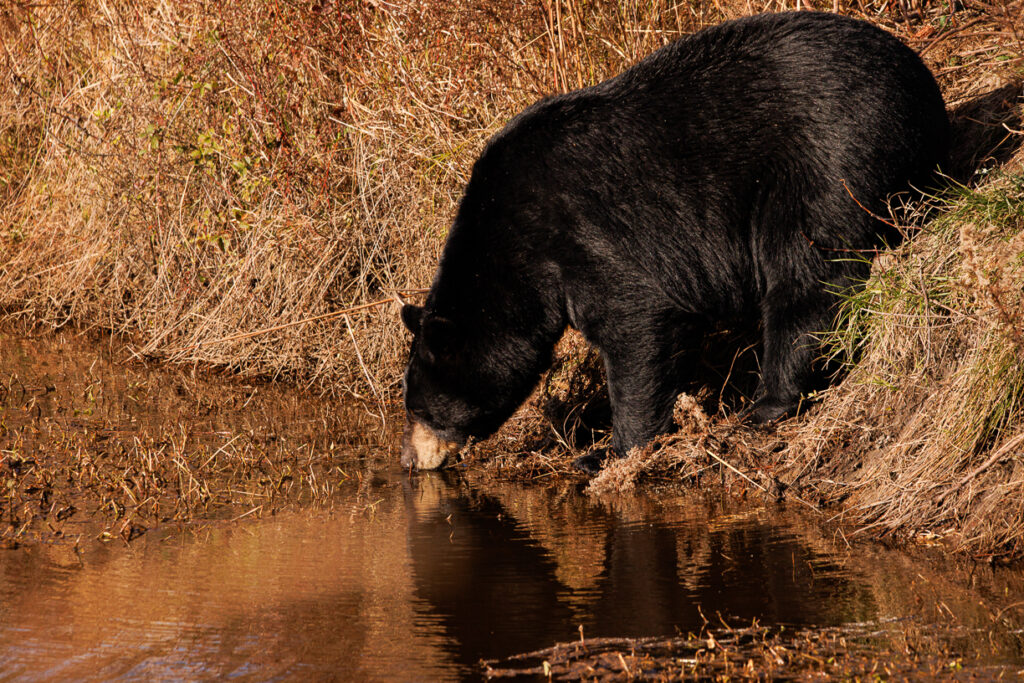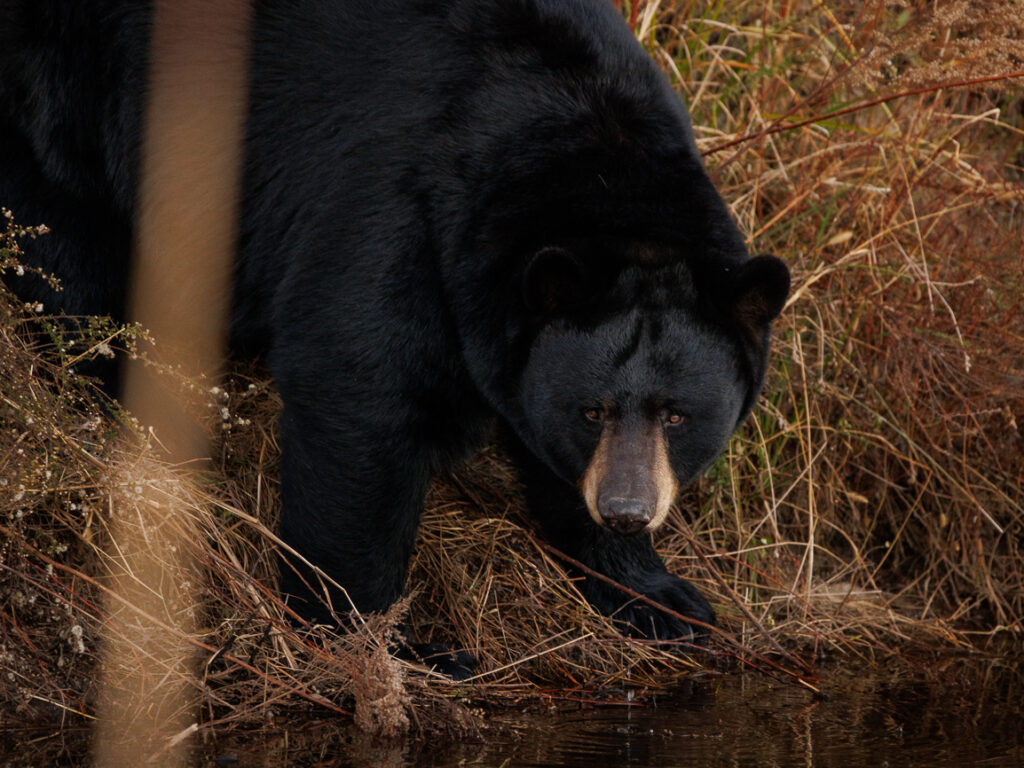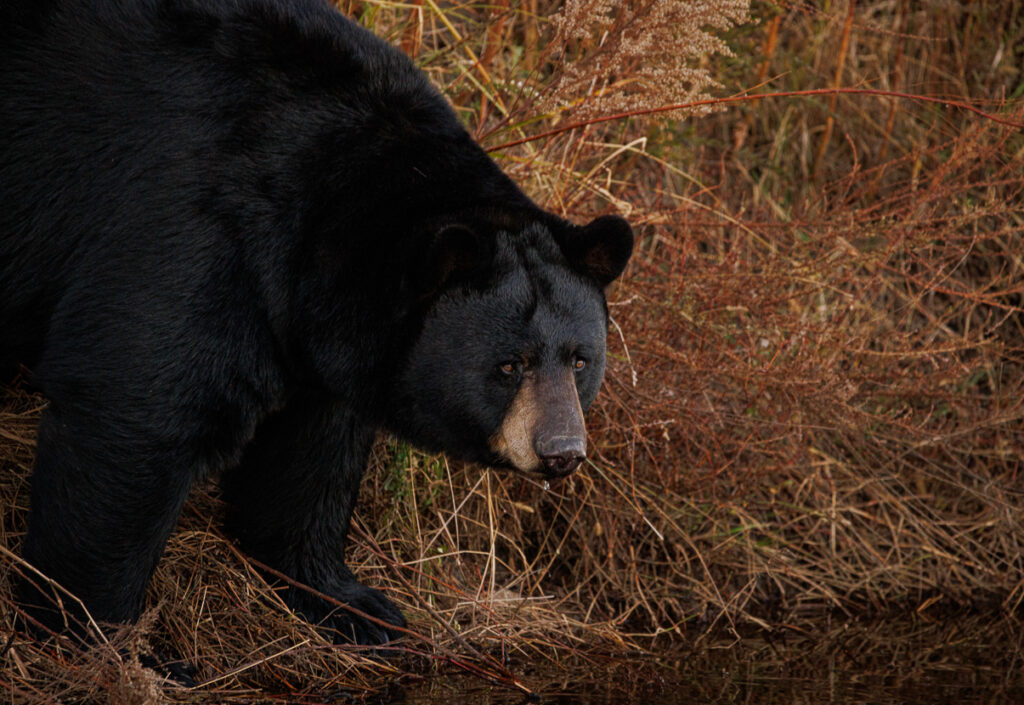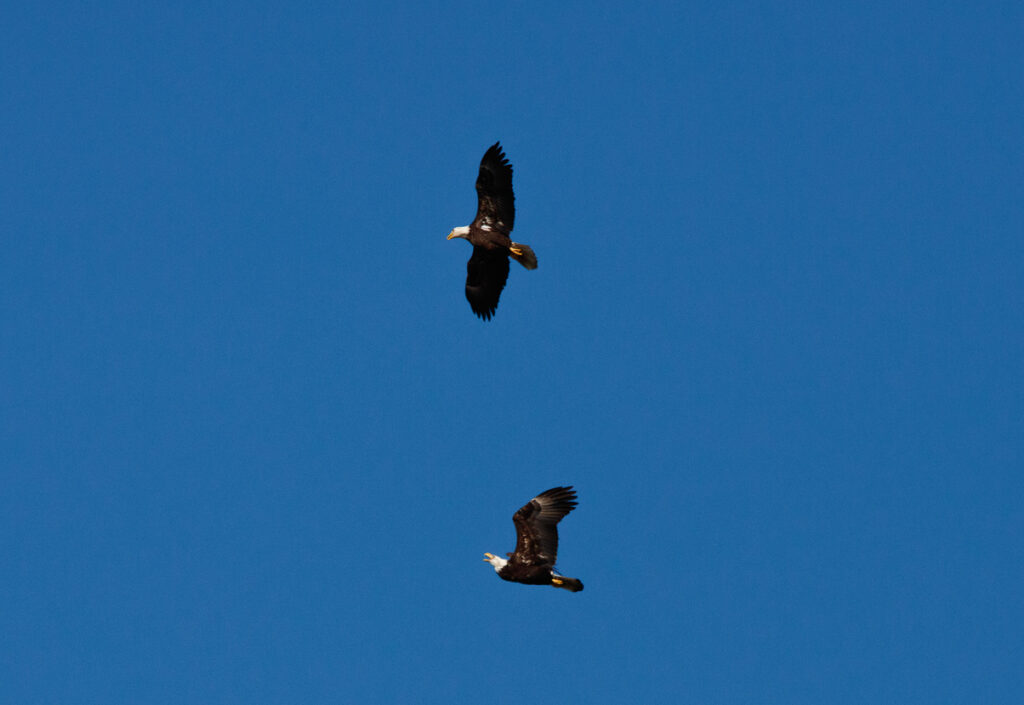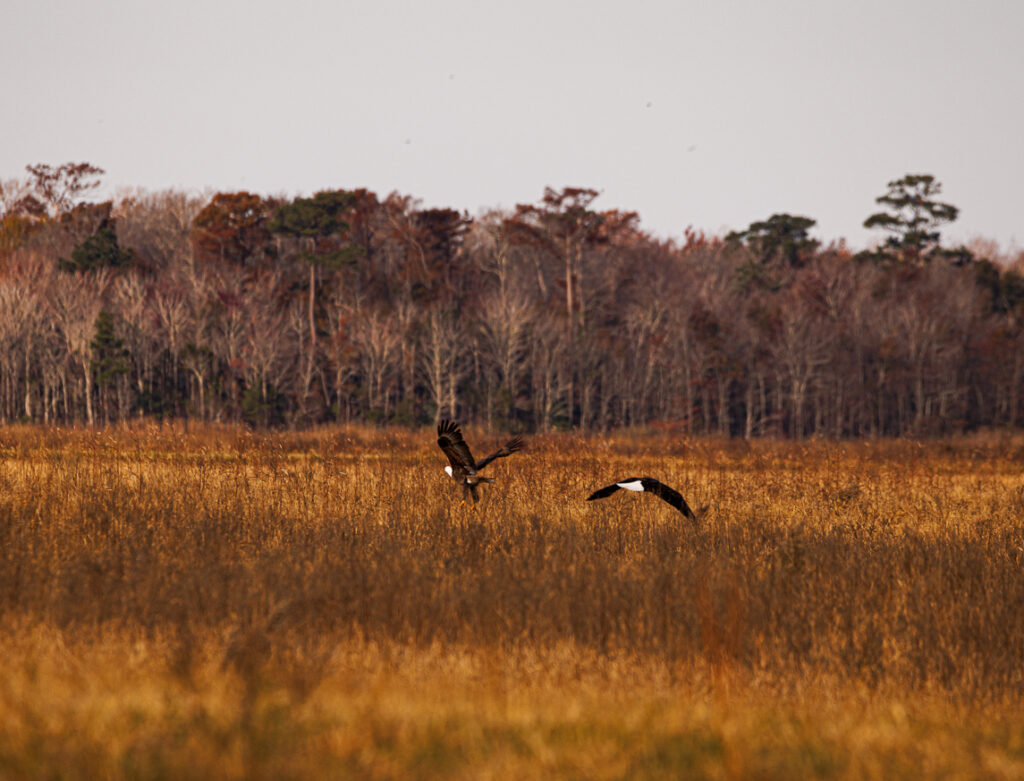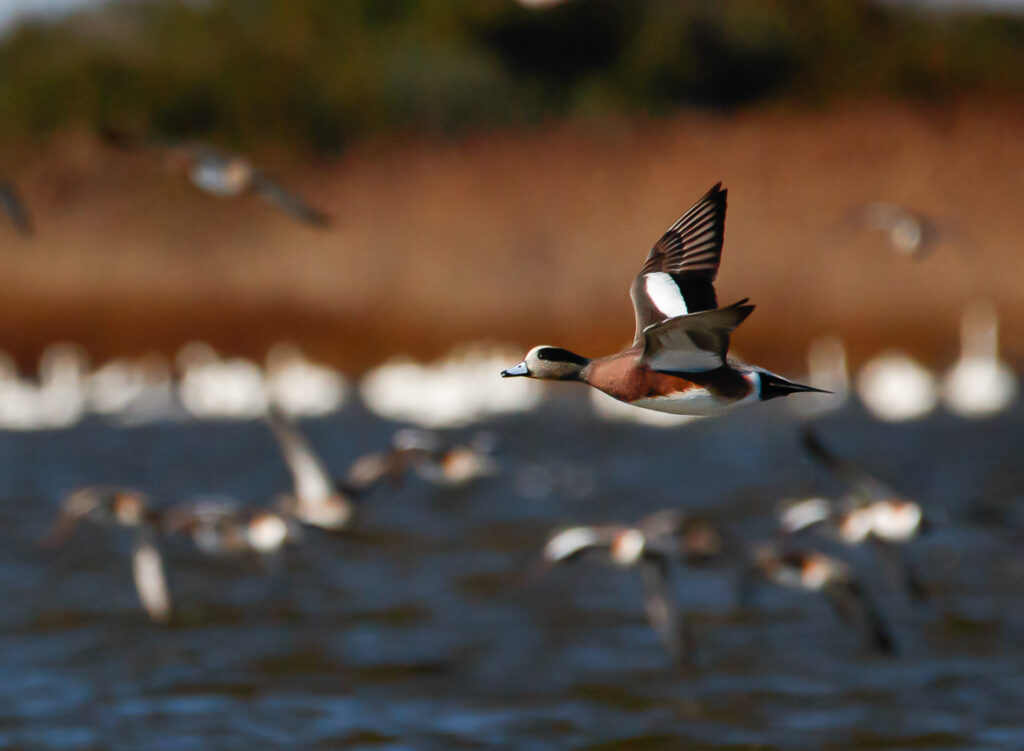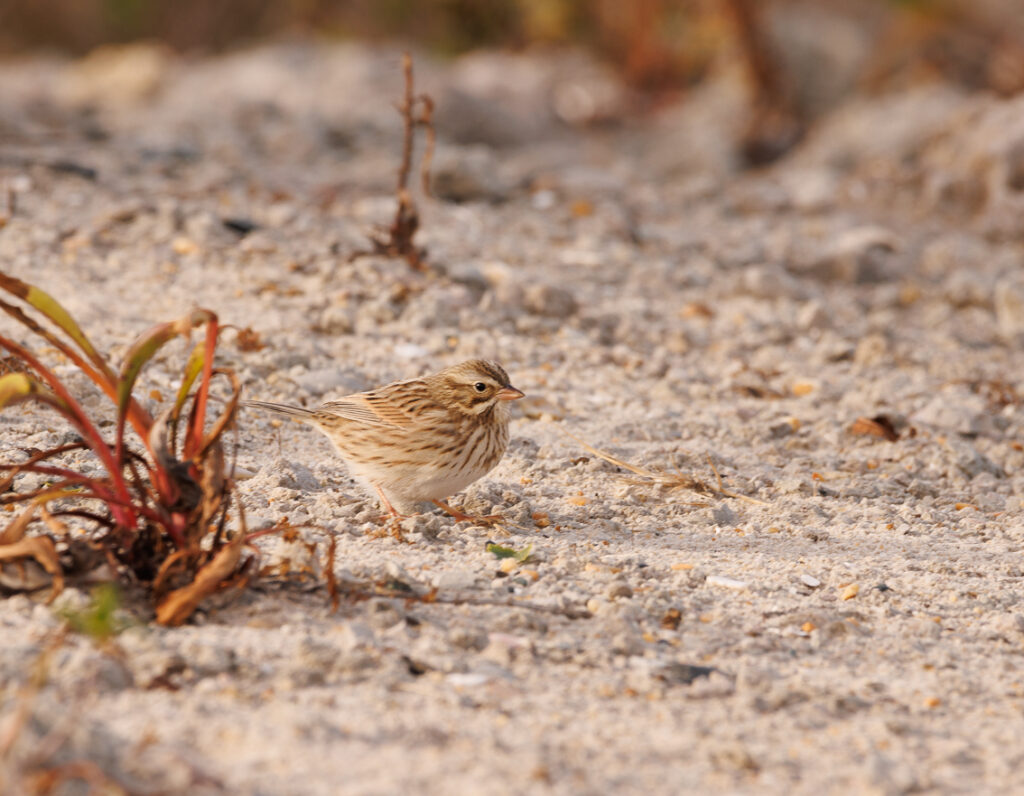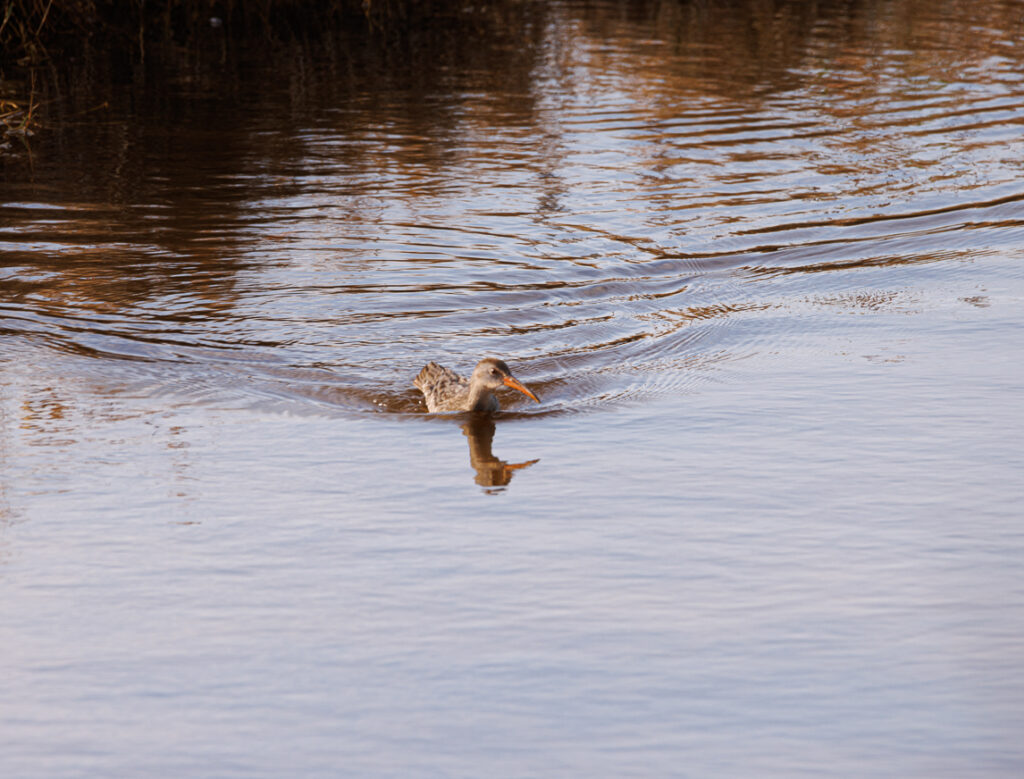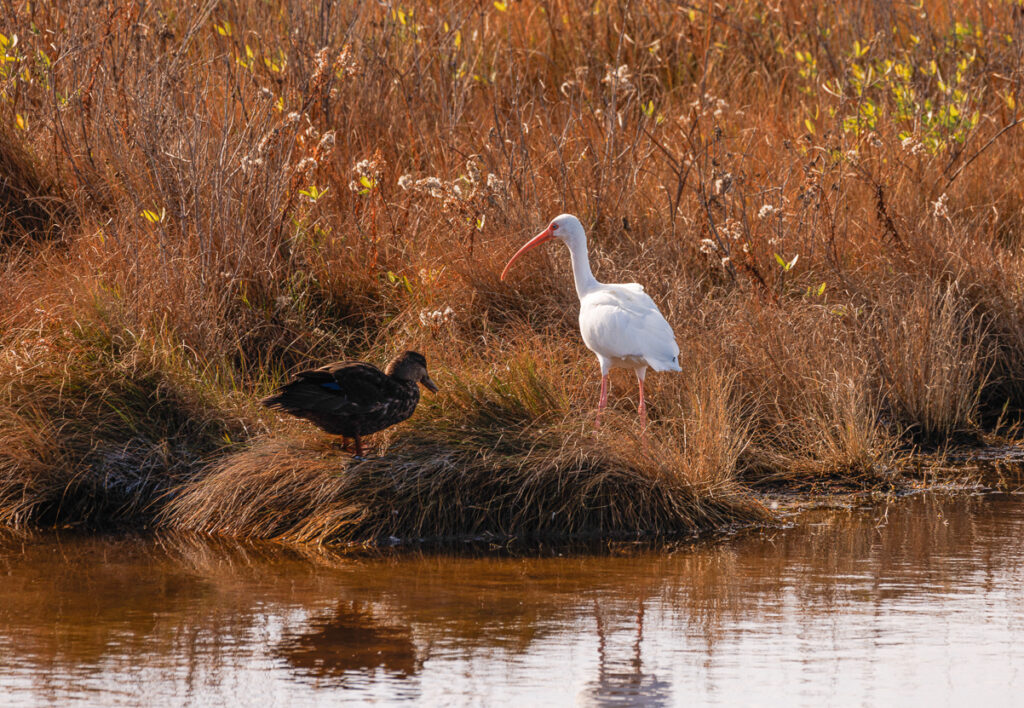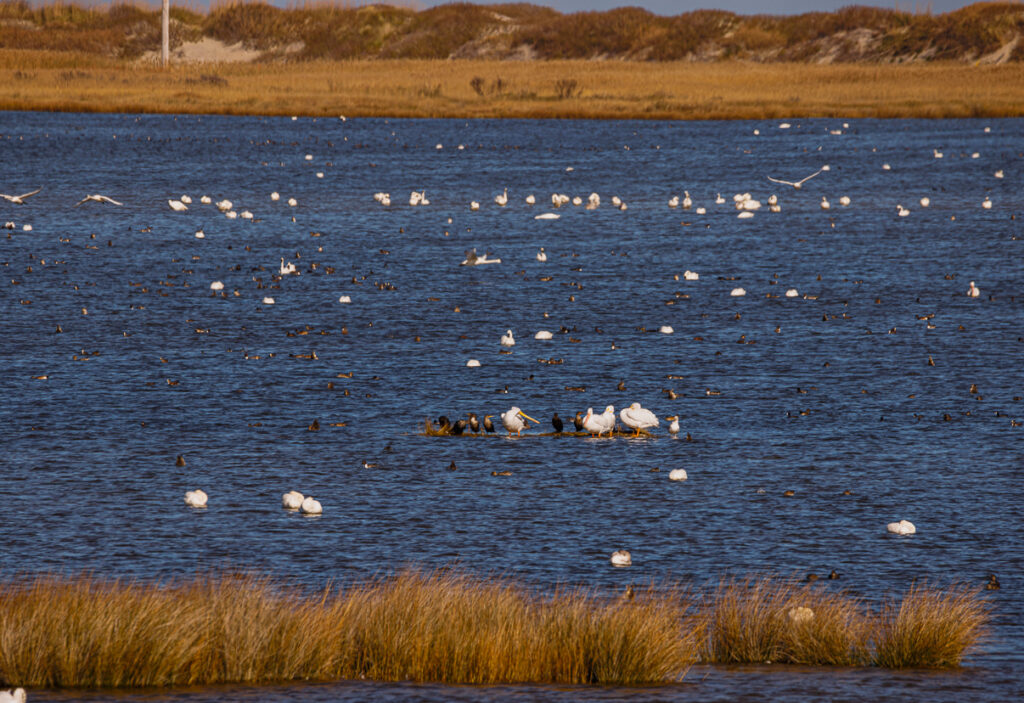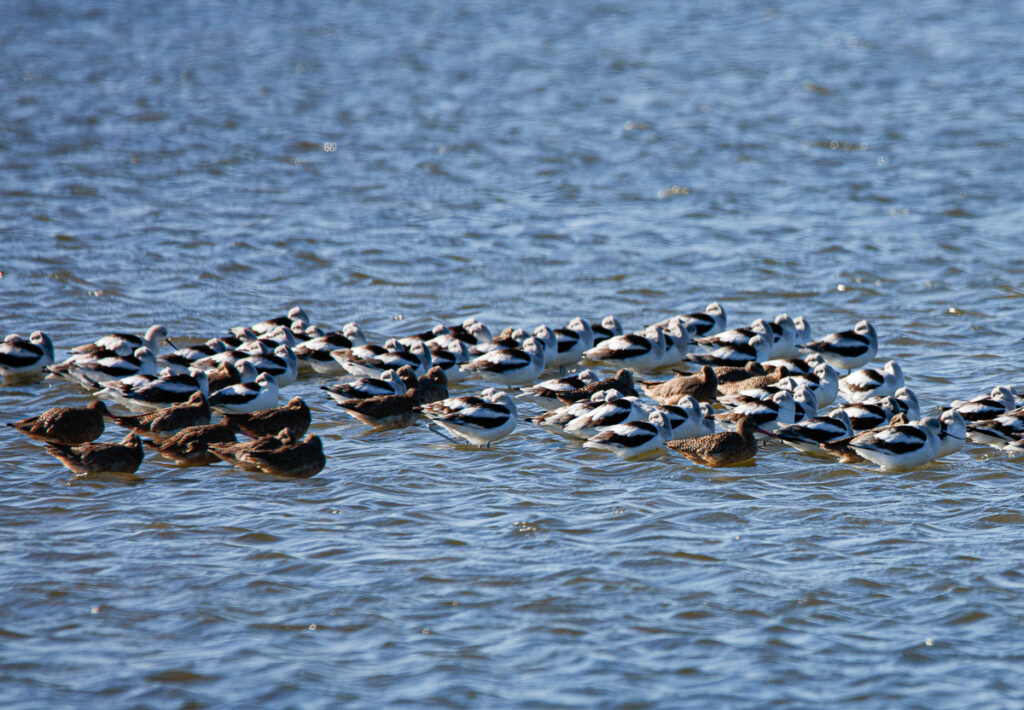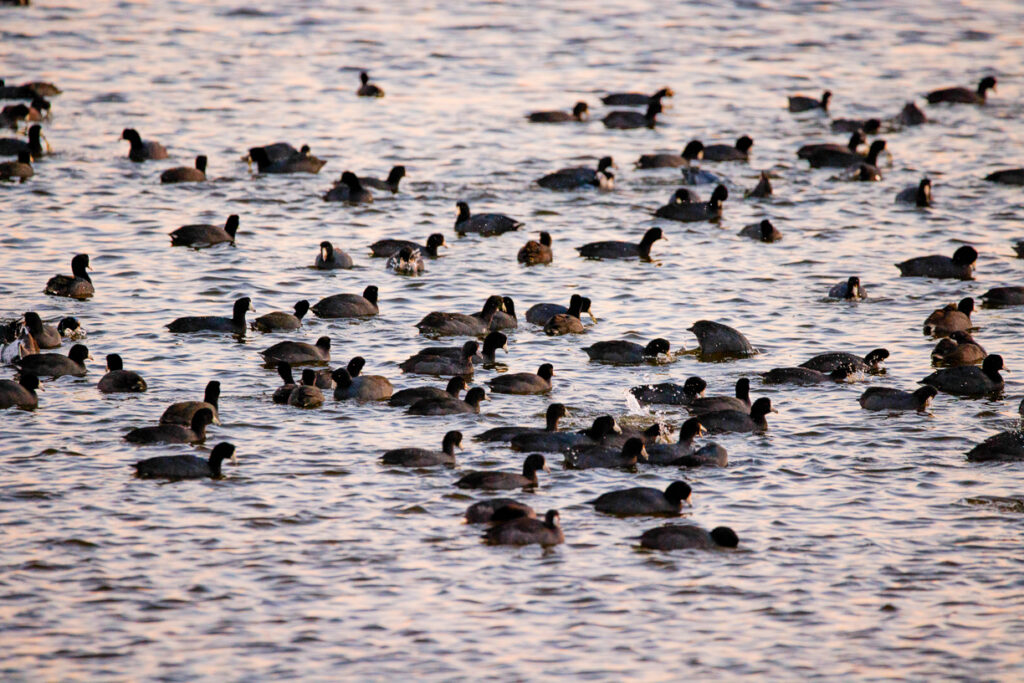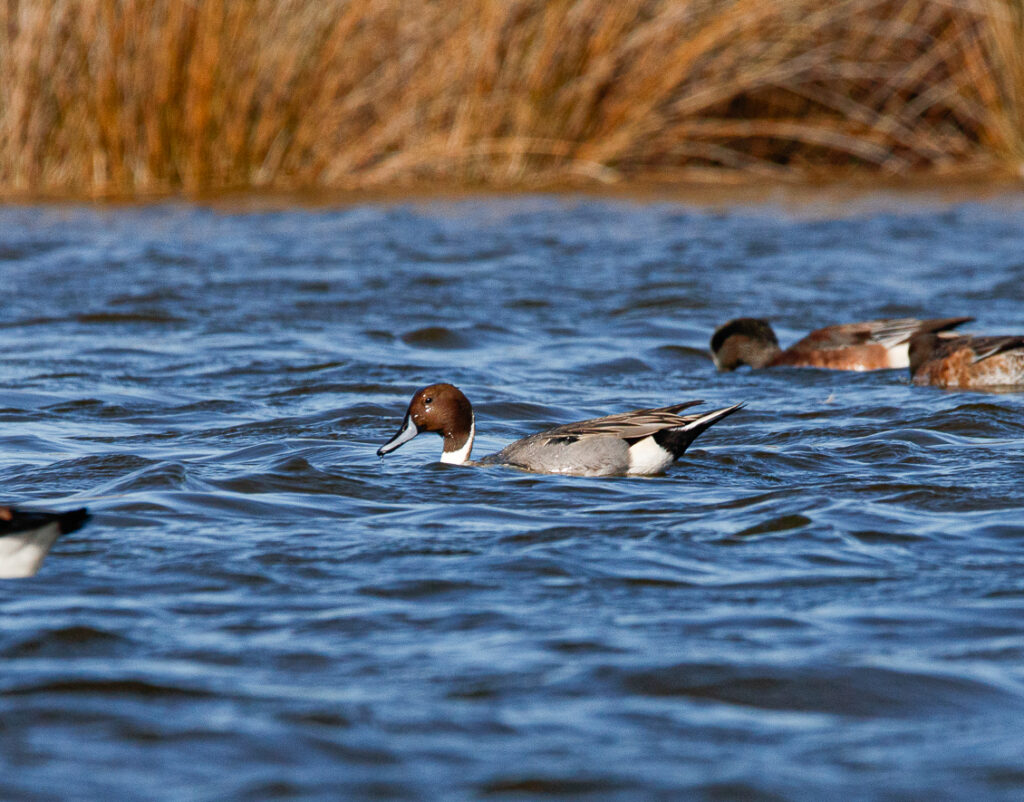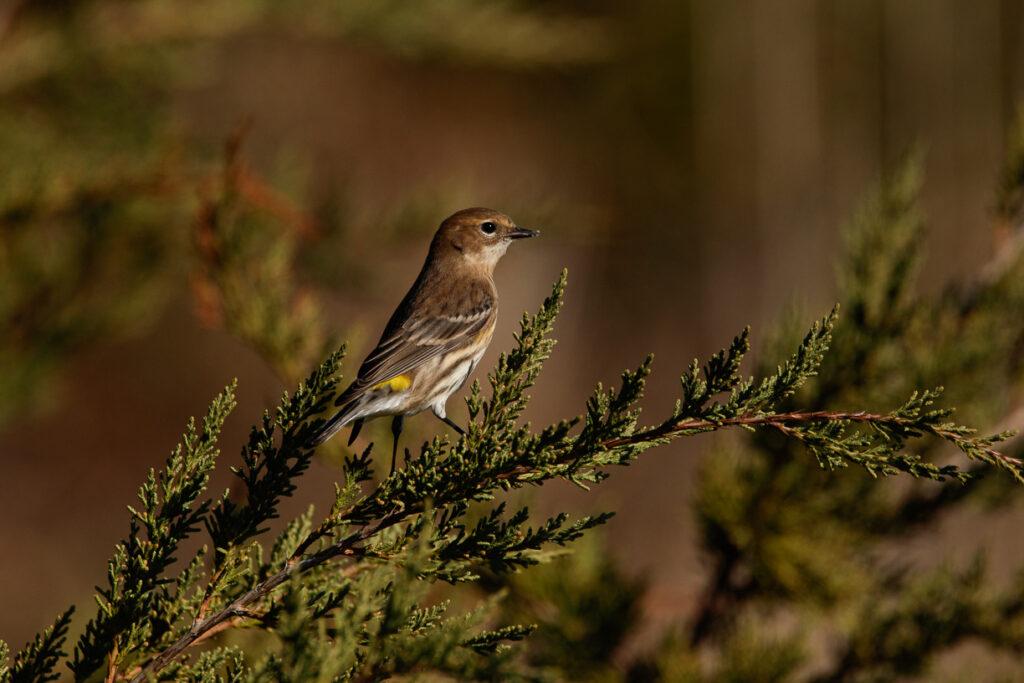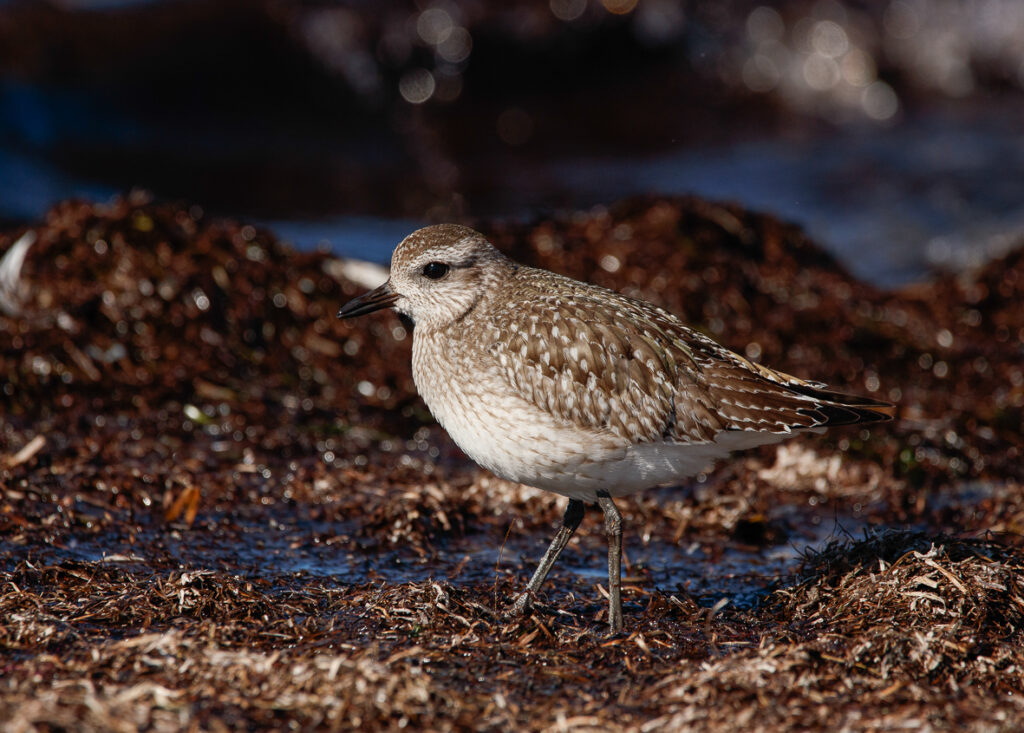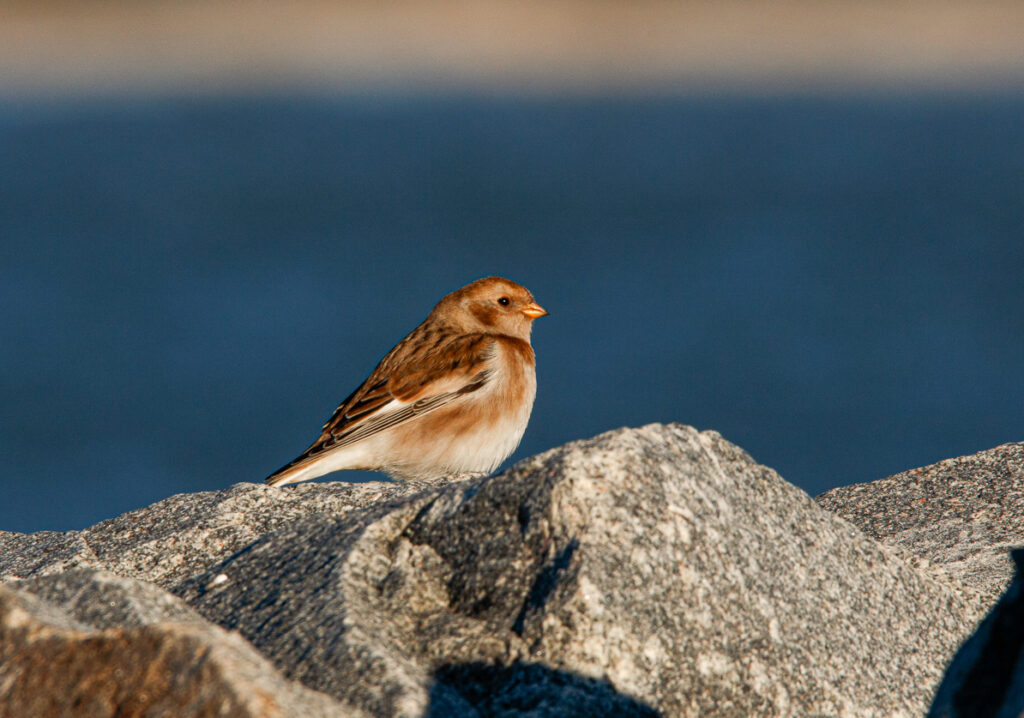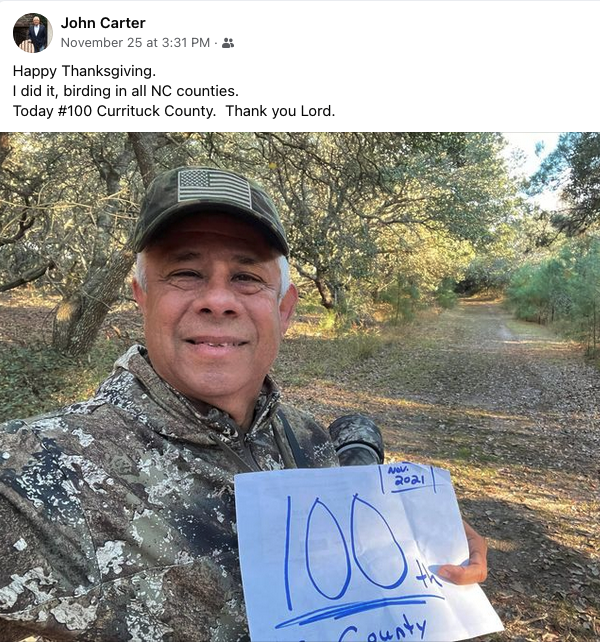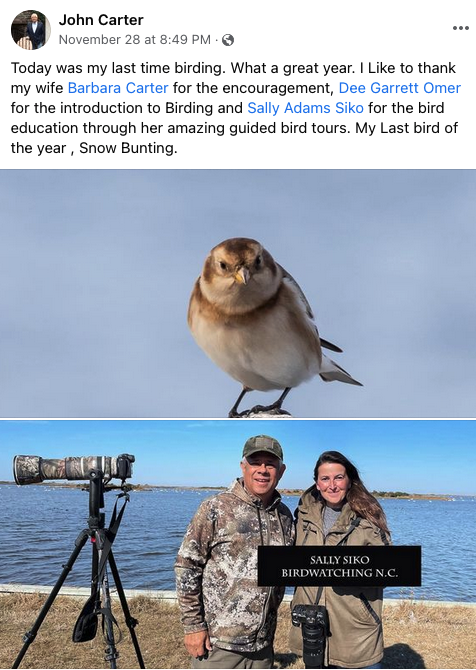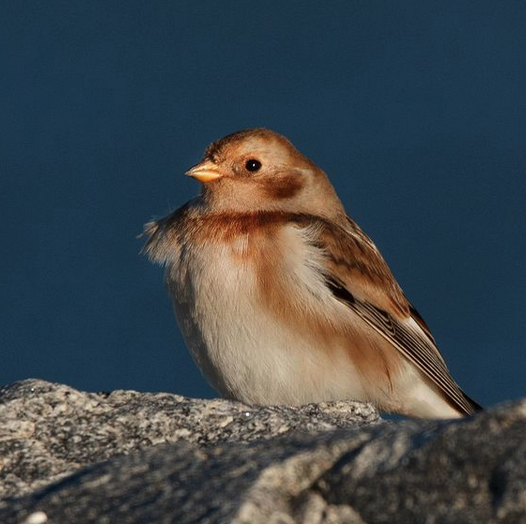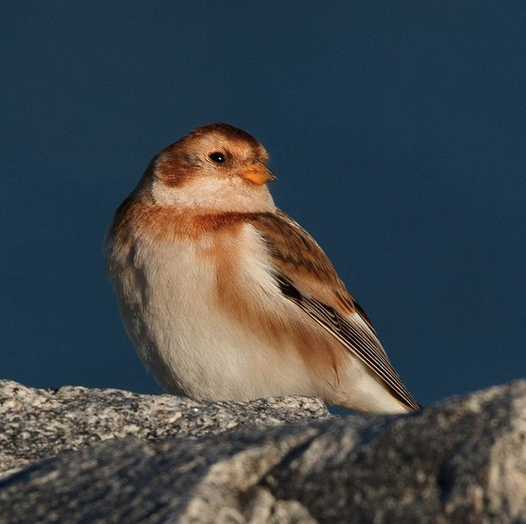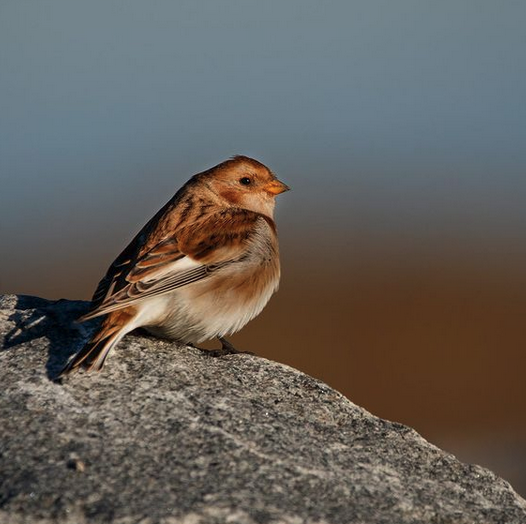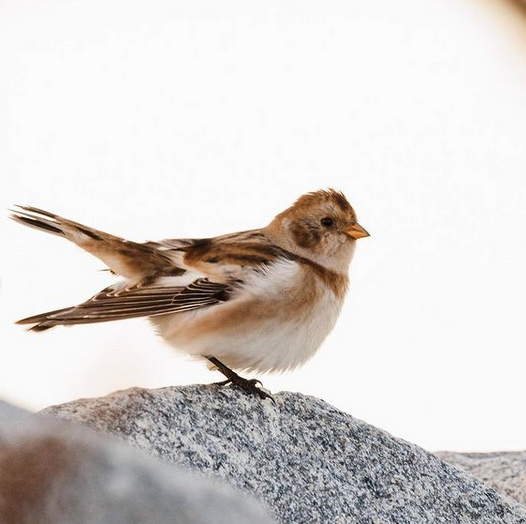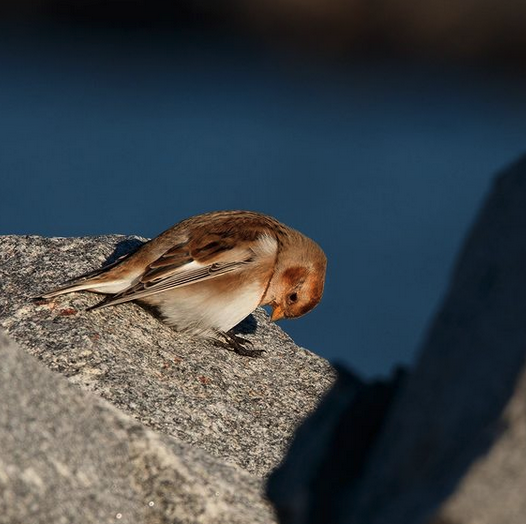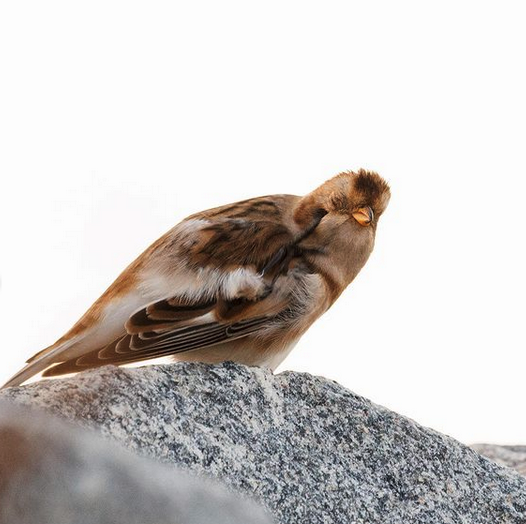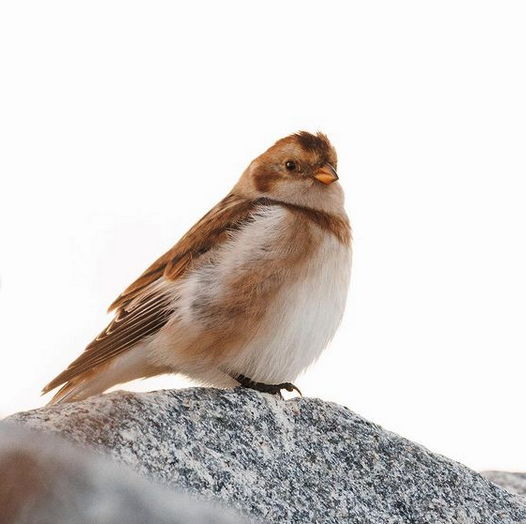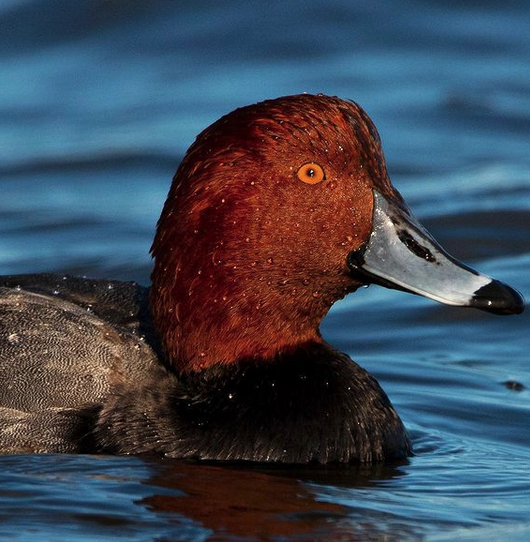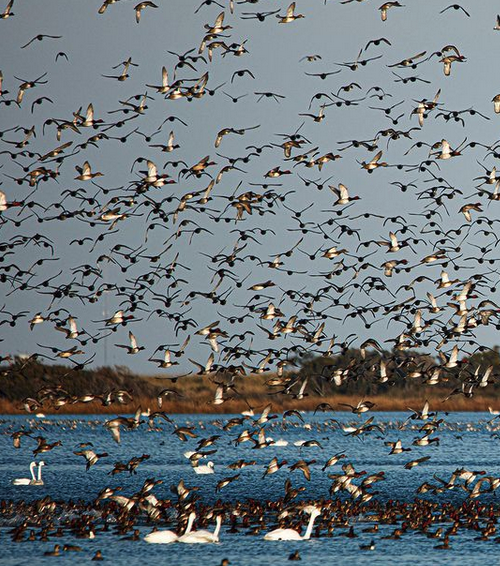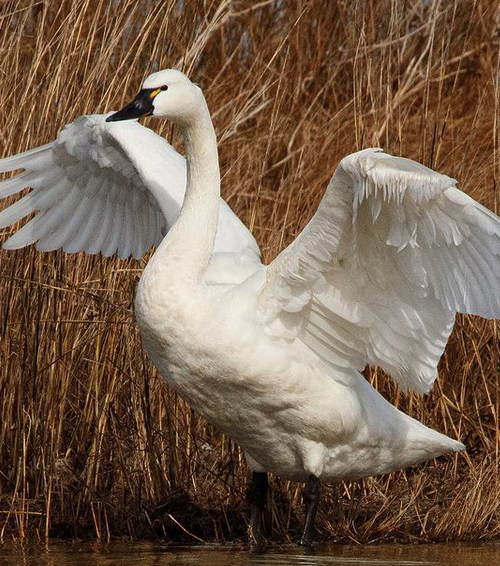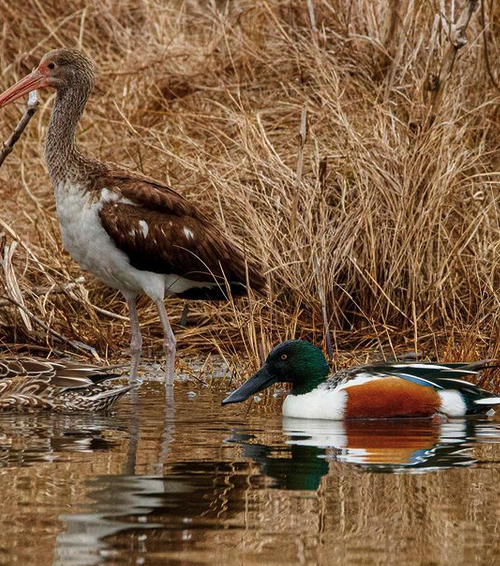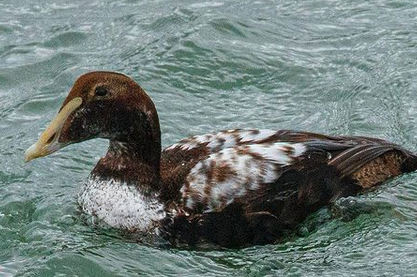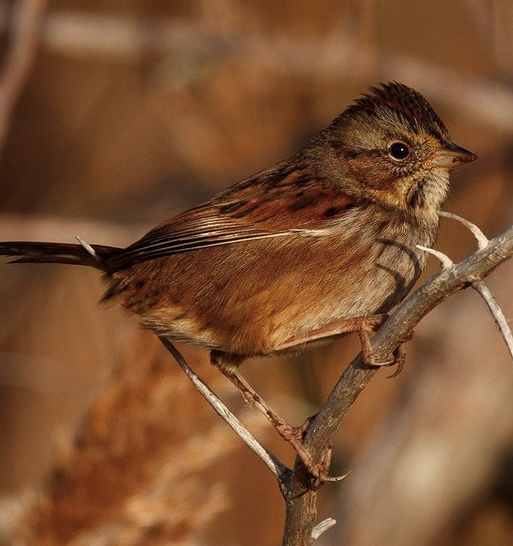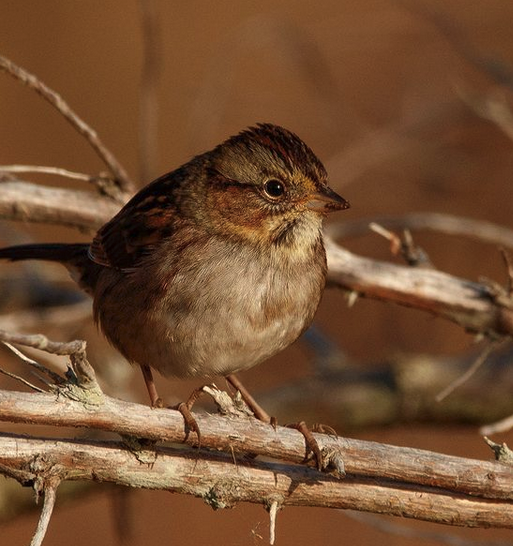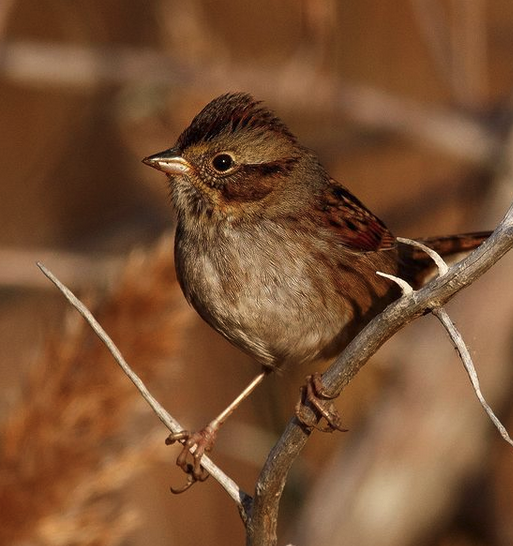By Sally Siko
Here’s a duck which I’ve yet to get a good clean photograph of, the Bufflehead.
While I see tons of them every winter, I just can’t seem to get close enough to one to grab a great shot.
It’s so frustrating because these are beautiful ducks, especially when they’re swimming on the blue water under bright skies. The sun just lights up the iridescence on the males head which reflects a dazzling array of color.
So beautiful!
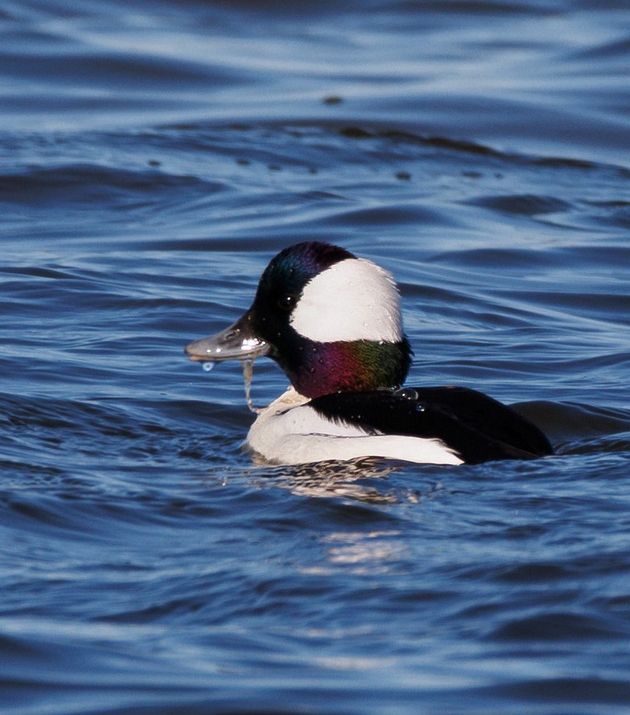
I took this series of (zoomed in on a 600mm lens & cropped 80%!)shots this past weekend while birding in the OBX and while they are pretty good, I still want better lol!
Happily I’ll be back in eastern NC next week to lead another tour so maybe I’ll get another chance at getting the perfect photo then.
We will see….
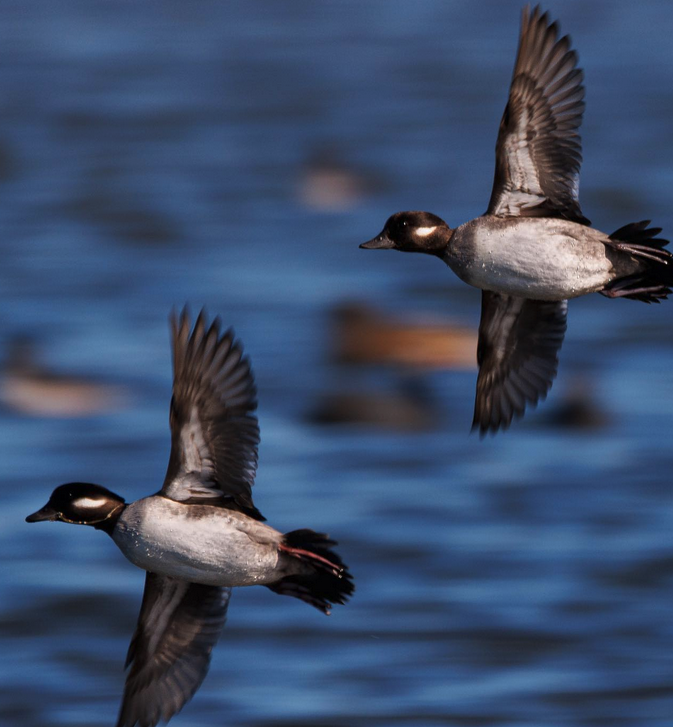



A wintertime resident of North Carolina, Buffleheads are best spotted swimming on our coastal lakes, ponds, estuaries, and impoundments. You can even see them swimming in the ocean just offshore on calm days.
The males are easy to ID with that striking combination of black and white body plumage paired with a black (but multi colored iridescent) face and white patch of feathers which extends from his eyes to the back of his head.
The hens (the ones shown in the series of in-flight photos) are quite lovely too with their soft grey and black plumage with white spots on their cheeks.
One of our smallest species of diving ducks, Buffleheads will hunt for a meal in both fresh and salt bodies of water.
In freshwater habitats, they eat primarily insects, and in saltwater, they feed predominantly on crustaceans and mollusks. Aquatic plants and fish eggs can often become locally important food items, as well when available.
They are strong swimmers and able to stay under water for more than a minute, then often popping up a long way from where they disappeared.
This makes them a little more challenging to photograph but it’s still fun to try haha 😉
The Buffleheads will remain in NC until early March so you’ve still got plenty of time to enjoy them this season.
Wooohoo!
Photos by @sally_siko of @bestlife_birding on my mighty mirrorless monster, the @canonusa #R5

